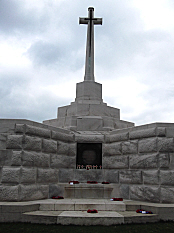 Tyne Cot Memorial Tyne Cot Memorial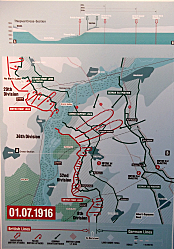 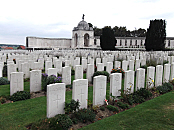 Tyne Cot Cemetery Tyne Cot Cemetery
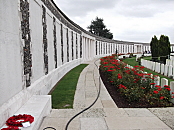
Rows of names at Tyne Cot
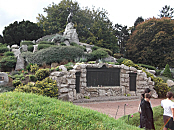
Caribou marks Newfoundland Memorial
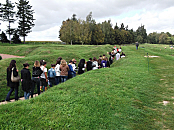
Newfoundland Trenches 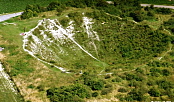
Lochnagar Crater
|
| | | All Quiet on the Western Front |
Report by Jim Paterson
I
organised a Classic car tour through Europe in October with the seven
cars and crews meeting up from various locations in the UK in France at
Reims for the start.
I took the opportunity to visit some of the
western front memorials and war graves on the route from the ferry at
Zeebrugge to Reims, crossing Belgium and northern France.
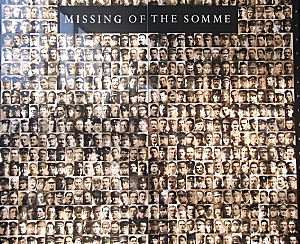 With
a couple of other crews we visited Passchendaele, Tyne Cot, Thiepval,
Newfoundland Canadian Trenches and the Lochnagar Crater. With
a couple of other crews we visited Passchendaele, Tyne Cot, Thiepval,
Newfoundland Canadian Trenches and the Lochnagar Crater.
Passchendaele
is of course rebuilt as it was after being completely flattened by
1917. Being built on raised ground it was bitterly fought over for its
commanding view of the otherwise flat and rolling countryside. Drinking
morning coffee in the village square it was difficult to imagine the
carnage, destruction and desolation on that very spot nearly 100 years
ago.
After visiting the British and Canadian war graves at
Passchendaele we headed a few miles up the road to Tyne Cot. The name
"Tyne Cot" is said to come from the Northumberland Fusiliers seeing a
resemblance between the German concrete pill boxes, which still stand
in the middle of the cemetery, and typical Tyneside workers' cottages -
Tyne Cots.
Walking to the visitor centre before entering the
cemetery we became aware of a female voice speaking. Every 5 seconds or
so a name and age would be announced. This continued in the centre with
a photo of a fallen soldier. We were there over an hour and it never
seemed to repeat.
Tyne Cot is the largest Commonwealth
cemetery in the world. During the 1917 offensive tens of thousands of
soldiers died here in 100 days to gain barely 8 kilometres.
The
cemetery is vast, and while there were many visitors the place was
immaculate, with gardeners constantly tending the grass and flowers.
What impressed me most were the school parties who left Remembrance
crosses with messages on the central monument. I, and I think the
school parties found the experience deeply moving and hopefully they
have seen the futility of war.
We then visited, and walked the
trenches at the Newfoundland Memorial Park, a site on the Somme
battlefield near to Beaumont Hamel. The land was bought by the Canadian
government after the First World War. It was named after the Royal
Newfoundland Regiment, which had provided one battalion of 800 men who
were decimated during one battle serving with the British and
Commonwealth Armies.
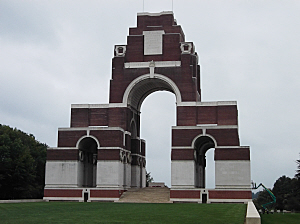 From
there we drove to the Thiepval Monument, a memorial to the Missing of
the Somme battlefields, and bears the names of 72,194 officers and men
of the United Kingdom and South African forces. From
there we drove to the Thiepval Monument, a memorial to the Missing of
the Somme battlefields, and bears the names of 72,194 officers and men
of the United Kingdom and South African forces.
Finally we
climbed up to the Lochnagar Crater in La Boisselle. A vast and
impressive crater in open farm-land, which was left by a tremendous
explosion in the opening moments of the Battle of the Somme on 1 July
1916. Photographs do not do it justice. It is like a lunar crater, so
immense that on approach it is impossible to see the bottom until you
are right on the crater edge.
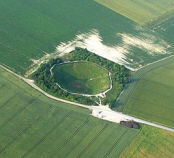 This
part of our trip was well worth the visit though I have never felt so
humble in my life, walking over the very ground that brave men and
women fought over during the Great War. Not much was said in the car on
the final run into Reims that afternoon. If you have visited any of the
Western Front war graves you will know what it feels like. They are
well worth a visit. This
part of our trip was well worth the visit though I have never felt so
humble in my life, walking over the very ground that brave men and
women fought over during the Great War. Not much was said in the car on
the final run into Reims that afternoon. If you have visited any of the
Western Front war graves you will know what it feels like. They are
well worth a visit.
| |